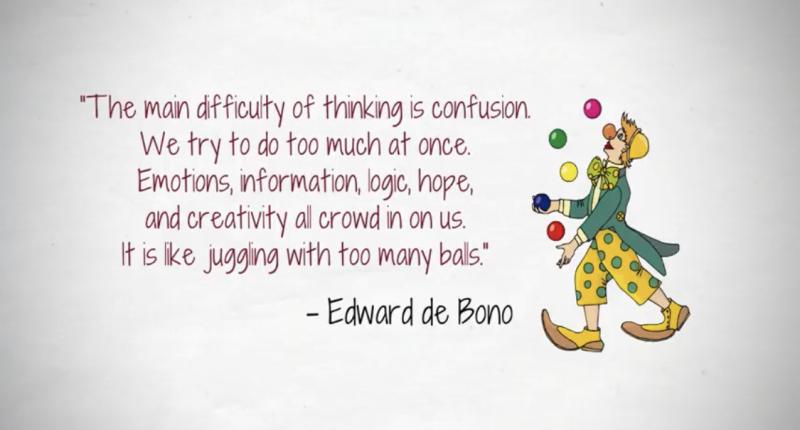In part 1 last week, I introduced the concept of “De Bono’s Six Thinking Hats” as a useful decision making tool.
This post looks at the practical usage of the tool.
Functionality wise, a quick reminder on how the hats work:
o Blue hat is managerial. Organises, defines the outlines of the situation or idea, analyses and returns to summarise at the end.
o White hat is objective, neutral and only looks at facts and data. Highlights knowledge gaps.
o Yellow hat looks on the bright part and highlights the benefits and value.
o Red hat relies on emotions – listens to intuition/gut feel.
o Black hat looks on the opposite part of the yellow hat by highlighting drawbacks, and is critical and cautious.
o Green hat is the creativity generator – allows for outside the box / fresh thinking, improvements and reiterations.
A few tips:
1. Use the colour of the hat and not its function: e.g, it’s time to put on our yellow hats or it’s time for white hat thinking.
2. Set a time for each hat and in a group setting – ensure everyone is wearing (figuratively) the same hat at the same time.
3. Ask 3-4 questions (more if you have the time) per hat to ensure that everyone is focused.
4. Always begin and end sessions with the blue hat.
